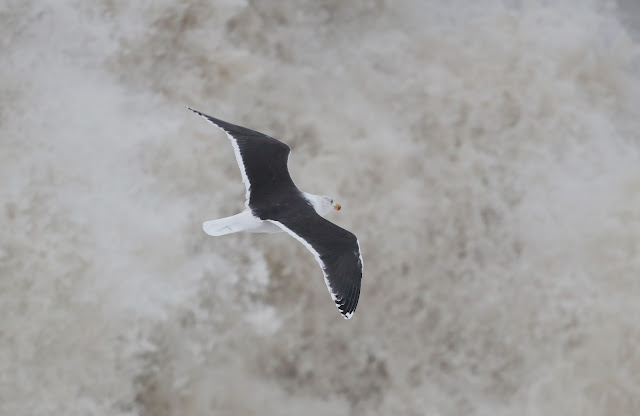Chris, Tony and myself arrived at Madrid airport late morning 0n 25/02/2020 and made or way to the Firefly hire car desk. We were pleasantly surprised to find that our car was brand new delivery mileage only Kia Stonic. Exiting the airport onto the excellent Spanish motorway system we headed south to our first stop the La Guardia, Lillo, El Romeral triangle, Where an hour half later we were watching the first 11 Great Bustards of the trip, albeit rather distant as most were, but great scope views.
Great Bustards
At another pull in we were scanning the fields and could hear a very quiet but odd call above the stiff breeze, I thought it was coming from some bushes further down the road, then Chris said look up there! waves of 1,000s very high Common Cranes were heading our way, then spiralling above us then drifting north. An amazing never to be forgotten sight and sound when they were overhead.
Common Cranes
Common Cranes
At the same site we also saw the first of the many Calandra Larks, Crested Larks, Corn Buntings, Serins, Hoopoes, Iberian Grey Shrikes also a a single Redwing. Time was flying by and we still had another 150+ Kilometers to drive to Los Pinos our home for next 4 days.
Calandra Lark
Crested Lark
Corn Bunting
Our hire car outside our house at Los Pinos, we declined use of the swimming pool
The house and the food in the restaurant at Los Pinos was superb. The tall bear tree in the back ground over the windscreen was an early morning gathering point for Hawfinches and Spotless Starlings.
Hawfinches and Spotless Starlings before sunrise
Spotless Starlings in the first glow of sunrise
Hawfinch after sunrise, most left before sunrise
Early morning each day during our stay at Los Pinos we took a stroll around the nearby lanes, it was a delight to hear cacophony bird song and birds all around. We saw the first of 100s of Azure Winged Magpies, Sardinian Warblers, Serins, Short-toed Treecreepers, Crested Tits, Hoopoes, Iberian Green Woodpeckers(mainly heard) etc. After these delights we went back for breakfast.
The Nuthatches were very vocal
Serins were numerous
Iberian Green Woodpecker( I found it very difficult to get any kind of image of these)
Short-toed Treecreeper
We spent a couple hours after breakfast at the Mirador del Peregrino view point which looks out over a spectacular vista of valleys and hills towards Santuario Virgen de La Cabeza.
Looking from the view point to the Santuario Virgen de La Cabeza.
Chis and Tony scanning for raptors from the Mirador del Peregrino view point. Although the weather looks lovely the mornings were very chilly.
From this view point we saw several Spanish Imperial Eagles, 2 Golden Eagles, 2 Bonelli's Eagles, Common Buzzards, Kestrels, Sparrowhawks, Goshawks and many Griffon and Black Vultures, also Choughs, Ravens many Azure Winged Magpies, Serins, Chiffchaffs, Blackcaps etc.
We also spent some time around the track to La Lancha which has several view points specially built for Lynx watchers but are also good for viewing all the raptors mentioned above.
Chris and Tony in one of the specially built Lynx watch points, later that day we saw 2 Lynx stroll down into this hide and down the hillside. From the track Mistle Thrushes, Chaffinches, Spanish and House Sparrows were common as were the Vultures, Cirl Bunting, Wood Lark, Red-rumped Swallow were seen and Great Spotted Cuckoo's were mainly heard than seen.
Spanish Imperial Eagles at La lancha track
Sardinian Warblers were numerous
Blue Rock Thrush
Numerous Black Redstarts
Numerous Azure-winged Magpies
Dartford Warbler
Many Hoopoe's
Little Owl by the track
Crag Martins were numerous around the dam as were House Martins and Swallows
Mouflon at the dam






















































